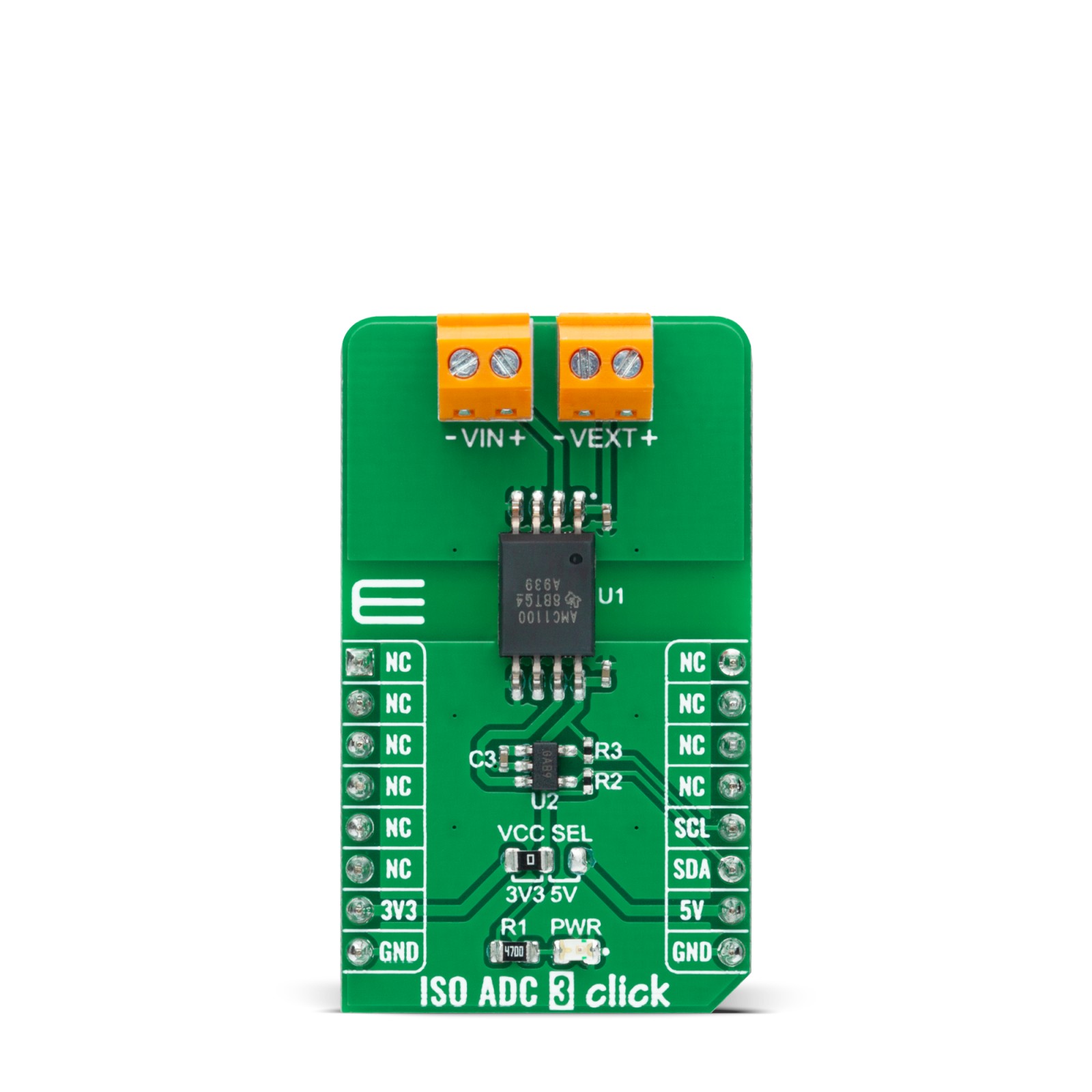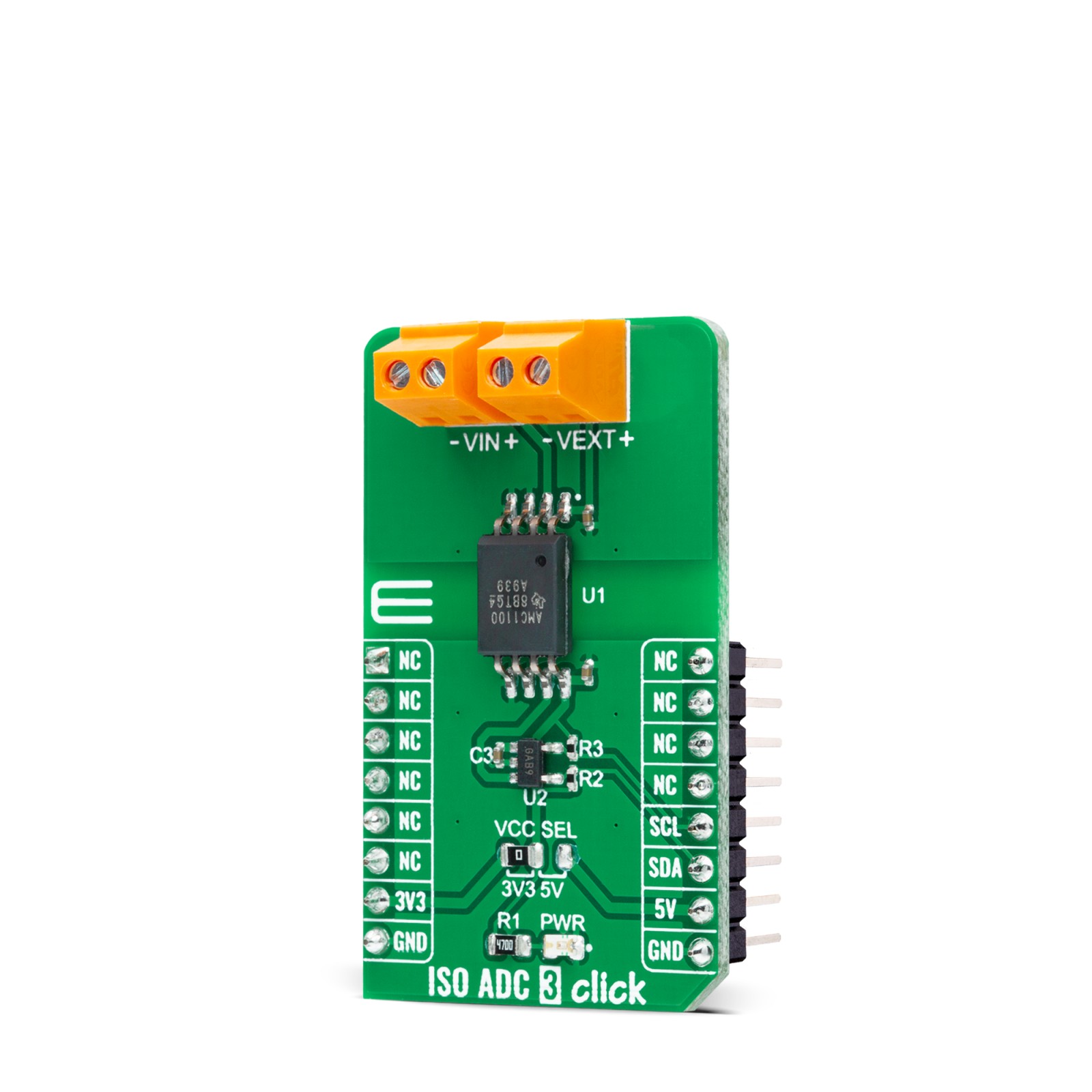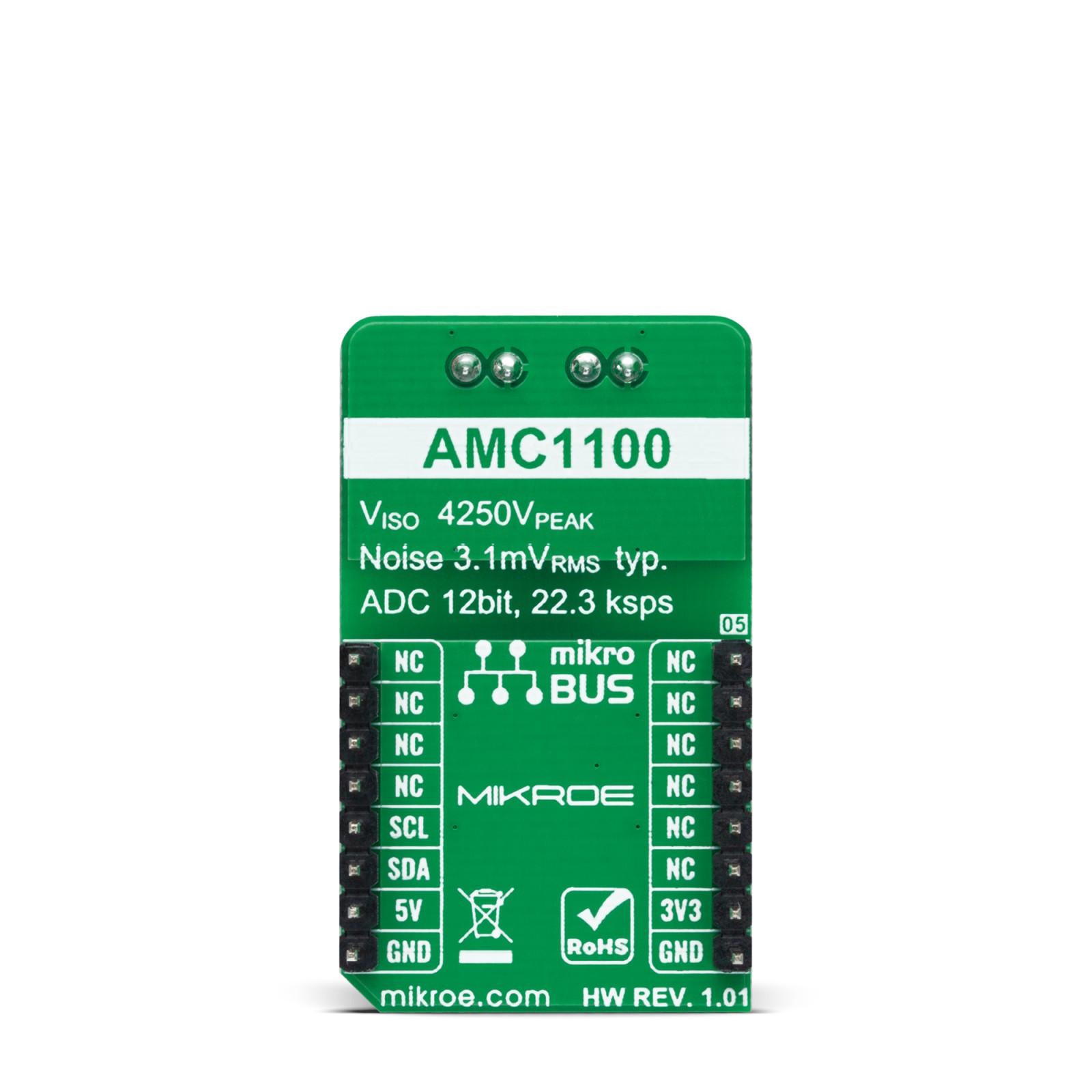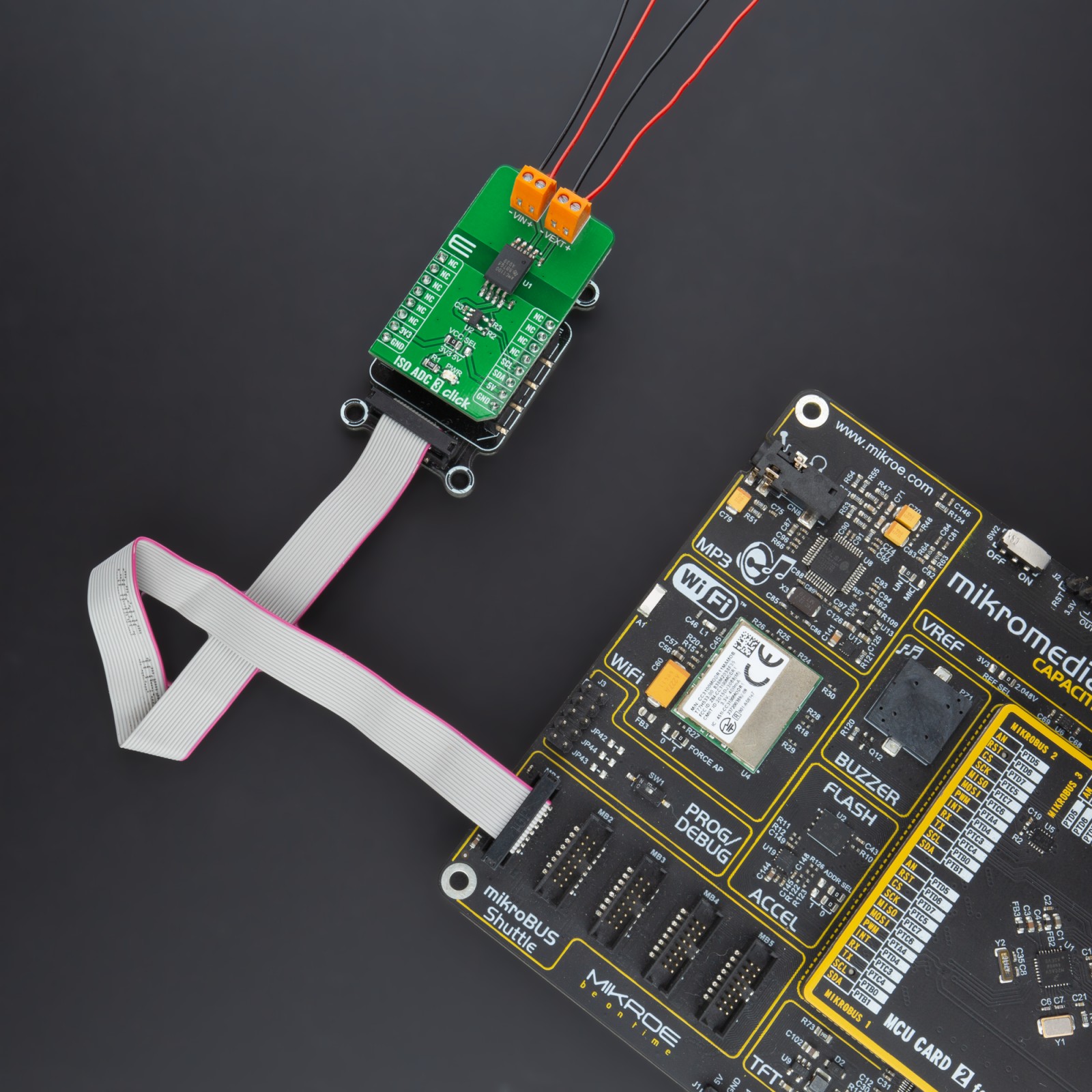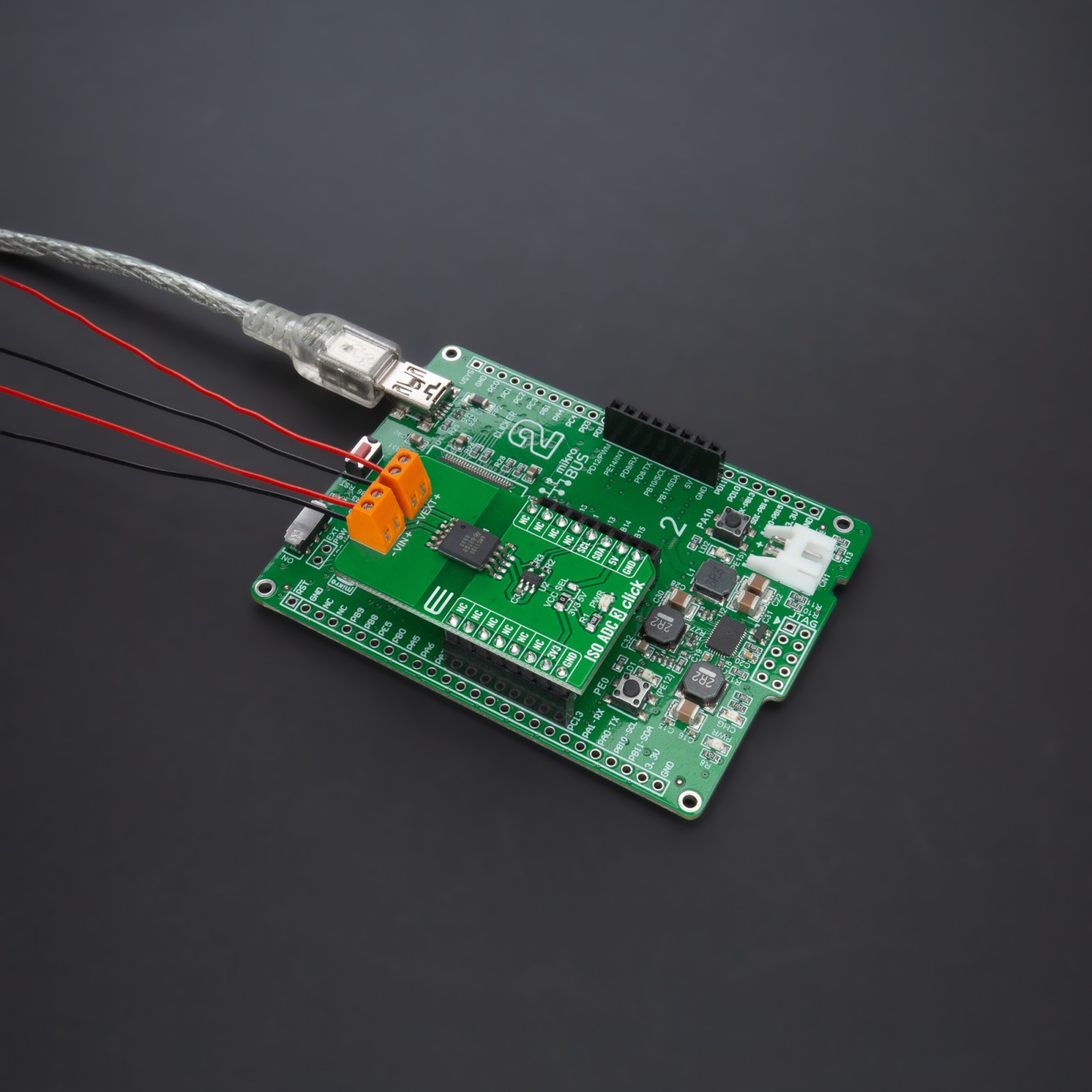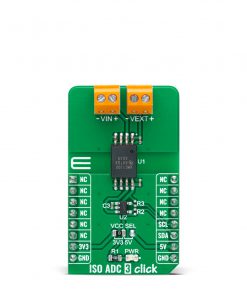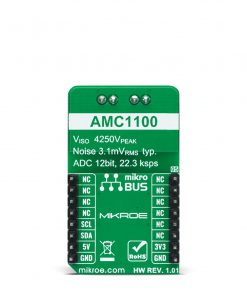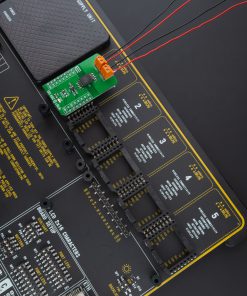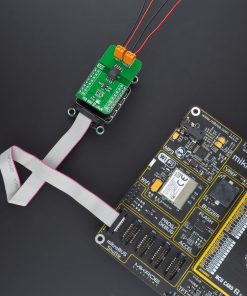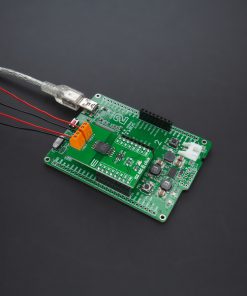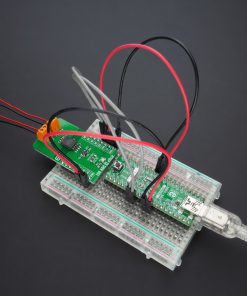ISO ADC 3 Click
R335.00 ex. VAT
ISO ADC 3 Click is a compact add-on board that contains a single-channel precision isolation amplifier. This board features the AMC1100, a precision isolation amplifier with an output separated from the input circuitry by a silicon dioxide barrier that is highly resistant to magnetic interference from Texas Instruments. This barrier is certified to provide galvanic isolation of up to 4250Vpeak. The AMC1100 offers several features as linearity, high input common-mode rejection, and low DC errors and drift. These features make the AMC1100 a high-performance isolation amplifier suitable for accurate current and voltage measurement in energy-metering applications and for industrial applications where users and subsystems must be protected from high voltage potentials.
ISO ADC 3 Click is supported by a mikroSDK compliant library, which includes functions that simplify software development. This Click board™ comes as a fully tested product, ready to be used on a system equipped with the mikroBUS™ socket.
Stock: Lead-time applicable.
| 5+ | R318.25 |
| 10+ | R301.50 |
| 15+ | R284.75 |
| 20+ | R274.03 |

